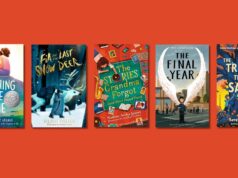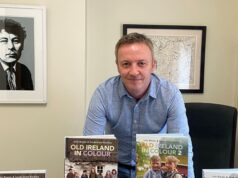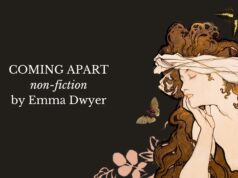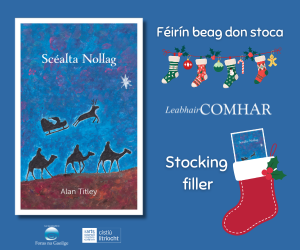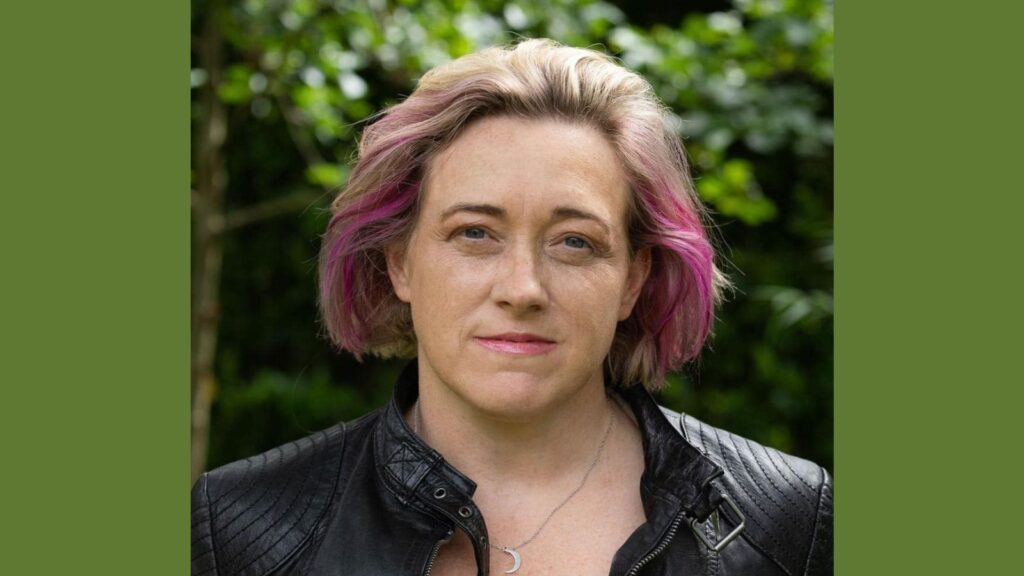
Ruth Ennis asks Eilish Fisher about the inspiration for Fia and the Last Snow Deer, how poetry has always been part of her life, and the whirlwind experience of being a debut author
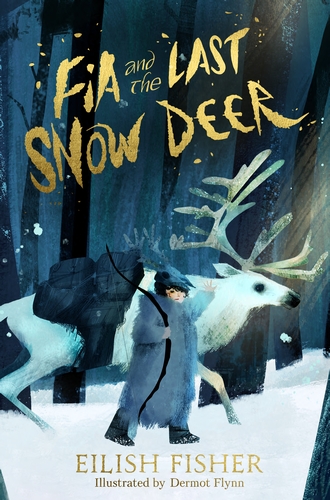
Fia and her snow deer Solas have always had a powerful and unbreakable connection. But as Fia’s village face a seemingly eternal winter, they turn their sights to Solas and an ancient prophecy that promises the return of sunlight and life, if the ultimate sacrifice is made.
You were inspired by Palaeolithic reindeer bones found in Cork—what was it about the bones caught your attention?
Until I read an article in the Journal.ie I hadn’t realised that there were reindeer here in Ireland. I thought it was really cool and I wanted to know more. There is funded research on the flora and fauna of Palaeolithic Ireland, but this particular find was so fascinating. You can actually see the cut mark on the bone and it’s very obviously a human-made tool. It’s remarkable because it’s so much older than they originally dated the bone, and placed reindeer and people together in some kind of interactive capacity way further back than originally thought.
Lots of cultures in Europe and the UK had mythology surrounding a reindeer goddess that was associated with the sun. Why wouldn’t it be here as well?
It led me to ask what these relationships between reindeer and people would have been like. We know of the relationships between hunter-gatherers and reindeer from what has been observed with indigenous tribes in northern Europe and the UK, and I wondered if it was the same here in Ireland during that period. Lots of cultures in Europe and the UK had mythology surrounding a reindeer goddess that was associated with the sun. Why wouldn’t it be here as well? The story grew from there. I think it’s a really good example of finding inspiration from anywhere.
Your verse is sparse and evocative—why is blank space important to you as a writer?
I was naturally drawn to verse. My background is in medieval literature, I’ve a Masters in medieval Irish and a PhD in Middle English, and all of that is verse. Poetry has always been what I’ve written and read since I was a child. It’s a safe space for me, and I think it’s really important to make it a safe space for kids.
The way to do that is to make it sparse, accessible, uncomplicated while not dumbing it down for your readership. The majority of poems that were read to me when I was young were not kid’s poems: Robert Frost, Maya Angelou, Mary Oliver. A common thread through all their poetry was that they were accessible.
I think what verse does for anyone, but especially kids, is give them confidence
There’s a misconception that for something to be poetic, it has to be complicated or convoluted and if you don’t understand it, you just don’t get it. I don’t think that’s right. I think what verse does for anyone, but especially kids, is give them confidence. They can say “I read a big book and it was poetry, and poetry is meant to be scary but this wasn’t.”
It’s also about placing trust in a reader. You’re not filling in the gaps, you’re letting them figure out the emotional dynamics of the story. The writer places the bare bones of the story, the reader fleshes it out.
What books have influenced your work?
[Eilish pulls out a large stack of books to share] I’ve a massive pile of poetry books and verse novels here. Any of Sarah Crossan’s novels. Love That Dog by Sharon Creech has my heart and soul. Blood Water Paint by Joy McCullough is the book that made me start writing in verse. I’d read children’s and young adult books mostly.
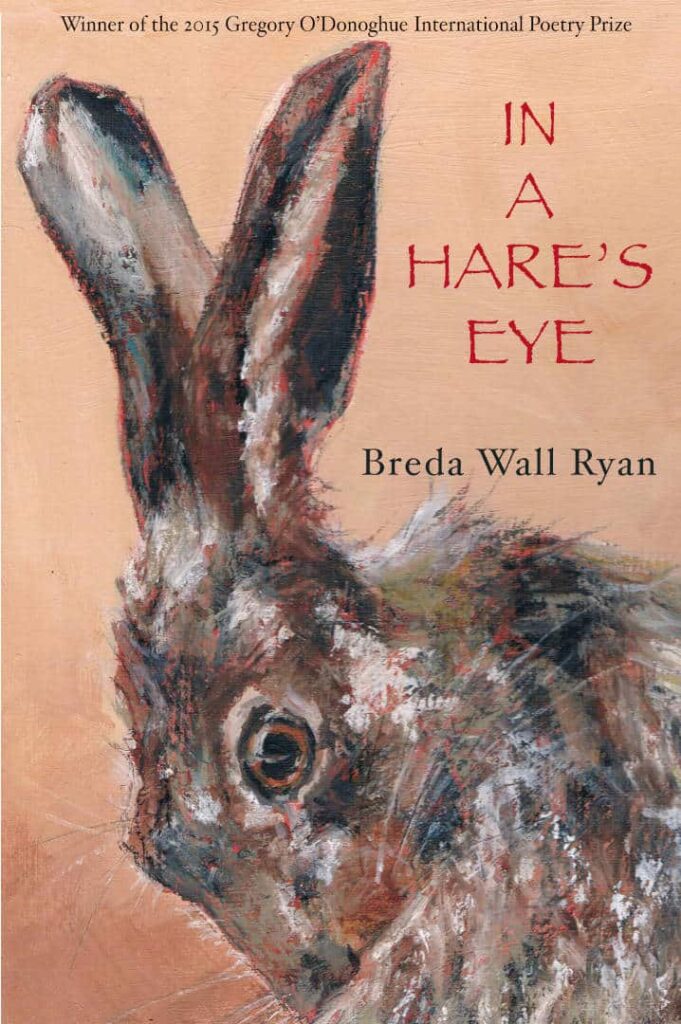
For Irish poetry I read Jane Clarke, T.S. Elliot Prize 2023 shortlistee and also my neighbour. Breda Wall Ryan, who sadly passed away a few weeks ago, she was a lovely, amazing Irish poet. I like Dog Songs by Mary Oliver. David Budbill’s Judevine is based on the town where we both lived in Vermont, it’s essentially a verse novel and was the first one I ever read when I was thirteen. Sir Gawain and the Green Knight of course, it’s what I used for my PhD. It’s so beautiful, I read it every year at Christmas because it’s such a cool story. If I was ever to do a retelling, it would be of this.
How did you approach developing Fia’s relationship with Solas, and Mish’s with Wolf?
That really goes back to how much animals are a part of my life. I love books with talking animals, but for me it’s really fun to interpret the language they actually speak. Every animal has their own language, through body language, energy, movement. I’ve had a lot of animals, both prey and predator: horses, dogs, cats, cows, everything. When I was writing Fia and her relationship with Solas, it is based on how a real relationship would be with an animal. Their communication is on this amazing level because they live together and they understand each other and share their energies.
Every animal has their own language, through body language, energy, movement
I also worked with horses in the past, and for your own safety as well as theirs you have to be very aware of their body language. You have to be able to pick up on what they’re telling you. All this work with prey animals was inherently in me when writing Fia and Solas’ relationship. It’s different for Wolf and Mish because Wolf is a predator. Prey communication is very sensitive and not usually dangerous, compared to predator instincts. There’s a scene in the book where Wolf acts like prey, because I wanted to make it clear without the use of verbal language that something was not normal in the story. It was important to me to show Fia understood this.
Community is crucial in the world Fia lives in. How did you navigate this element of world-building with Fia’s fiercely independent nature?
They’re not mutually exclusive. Fia is strong because she feels an innate responsibility to her community and she has to figure out how to reconcile that with her responsibility to her snow deer Solas. That’s her challenge, she has to choose between leaving her community with Solas and never coming back, or taking her great-grandmother’s place as shaman.
That’s her challenge, she has to choose between leaving her community with Solas and never coming back, or taking her great-grandmother’s place as shaman
Mish is such an important character in this challenge, he represents that community and supports her on the journey in the way the community has supported her since she was born. She couldn’t do any of this on her own and it allows her to truly embrace who she is.
What has your experience been as a debut writer? Have you any advice for authors in the same position?
It’s amazing. I love every minute of it. It’s what I’ve been working towards ever since I was a teenager. It’s been a whirlwind and surreal. When you’ve been working towards something for so long, it’s like ‘is this really happening?’
I think my advice for debut authors is to take on what you can and be mindful of your stamina
I think my advice for debut authors is to take on what you can and be mindful of your stamina. What really helped me was to know these few months were going to be crazy so I made sure ahead of time that other things were taken care of. I organised support with carpooling and activities for my son and freeing up things as best I could.
Having people in place who can step in if I need help with something has been great. It’s a lot, even when you have this support set up, so I can’t imagine what it would be like if you didn’t. Also, if you’re writing anything for publicity or working on edits for a new project, get those done early as much as you can! You’re going to need time to process it all as well, so go easy on yourself for those few months.
What are you working on next?
I’m working on another middle-grade verse novel set in contemporary Ireland in a mountain town. It’s a story about the Sídhe, ghosts, and a girl who wanders into all that magical craziness.










